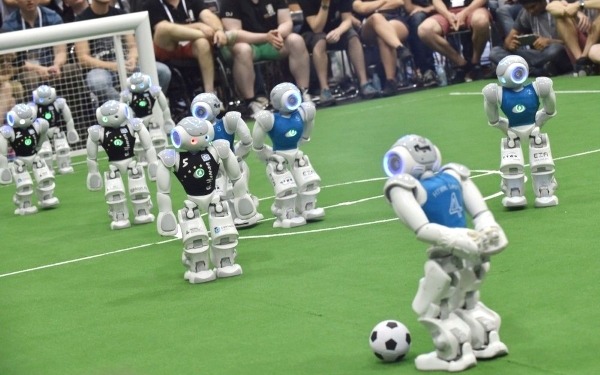At this moment, all talks are focused on the current football world cup which is currently being held in Russia. On its side, Montreal also draws a particular attention with the RoboCup soccer world championships.
It’s been more than 20 years that autonomous robots with a human-like body and human-like senses verse each other in a game of two, ten-minute halves. The different game categories of the competition are aid to individuals, the world of work and disaster situations.

This year, Australian robots NUbots demonstrate a certain improvement in their technology since they are able to perform some human-like movements. “We’ve programmed the robots to visually locate a ball on the soccer field, navigate a path to it, judge space and distance, and attempt to score a goal. Like professional soccer players, NUbots may also be inclined to drop to the ground and throw a tantrum if they miss a shot”, affirmed the team of researchers.
If you are wondering how they manufacture these robots, then, let us tell you they used Markforged’s Onyx One 3D printer which can print carbon fiber and onyx materials. According to the engineers, this 3D printer achieves a unique black finish and the carbon fibre used in the printing process enable to have light but sturdy and durable parts.
However, note that an upgraded version of this 3D printer has been made available by the manufacturer. Called Onyx Pro, it has a second nozzle and offers a print with fiberglass.
With humor, we learned that RoboCup aims at creating humanoid robots that would be able to beat the world champions of human football by 2015. Do you think this challenge might be achievable?
For further information about 3D Printing, follow us on our social networks and subscribe to our newsletter
Would you like to subscribe to 3D Adept Mag? Would you like to be featured in the next issue of our digital magazine? Send us an email at contact@3dadept.com
//pagead2.googlesyndication.com/pagead/js/adsbygoogle.js
(adsbygoogle = window.adsbygoogle || []).push({});


